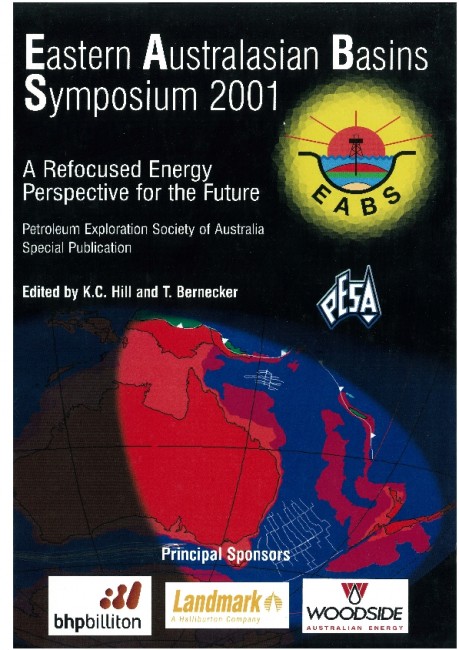Publication Name: Eastern Australian Basins Symposium 2001
Authors: T.E. Ruble, G.A. Logan, J.E. Blevin, H.I.M. Struckmeyer, K. Liu, M. Ahmed, P.J. Eadington and R.A. Quezada
Date Published: November 2001
Number of Pages: 32
Reference Type: Magazine Article
Abstract:
A collaborative investigation was undertaken to assess the prospectivity and hydrocarbon charge history of the Eyre Sub-basin at Jerboa-1 in the Great Australian Bight. These results provide the only reliable geochemical information on this newly recognised petroleum system. Petrographic analyses of fluid inclusion samples confirm an operational petroleum system and document the presence of a 15 m thick palaeo-oil column in Callovian to Kimmeridgian sandstones.Geochemical characterisation of palaeo-oil was only possible by analysis of oil trapped within fluid inclusions, because hydrocarbon stains throughout the Mesozoic section were overprinted by interaction with local coals. Aliphatic biomarkers indicate the inclusion oil is derived from a carbonate-rich source-rock containing algal and bacterial organic material, which was likely deposited in a lacustrine environment. Low levels of organosulphur compounds are consistent with non-marine deposition and an absence of plant-derived waxes suggests an environment with minimal terrestrial input. A hypersaline lacustrine source is unlikely due to the lack of distinctive biomarkers and an absence of botryococcane indicates that this source facies differs from other southern Australian lacustrine oil families previously characterised via analyses of coastal bitumens.
Regional palaeogeographic data indicate that Late Jurassic to Early Cretaceous deposition in the Eyre Sub-basin was predominantly non-marine, with internal drainage into a series of semi-restricted to restricted half-graben. The structural position of Jerboa-1, along with the near-basement position of the palaeo-oil column, indicates that hydrocarbons almost certainly migrated from lacustrine source-rocks in the flanking half-graben. This interpretation appears consistent with geochemical characterisation of the inclusion oil. Basin modelling for a 'pseudo-well' in the centre of the half-graben shows significant hydrocarbon generation occurring -85 Ma, near the time of continental break-up and structural reactivation which breached the Jerboa-1 trap. Stratigraphic and structural traps not affected by fault reactivation may have maintained their integrity and still present valid exploration targets.


